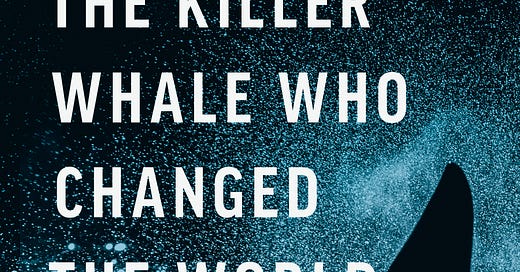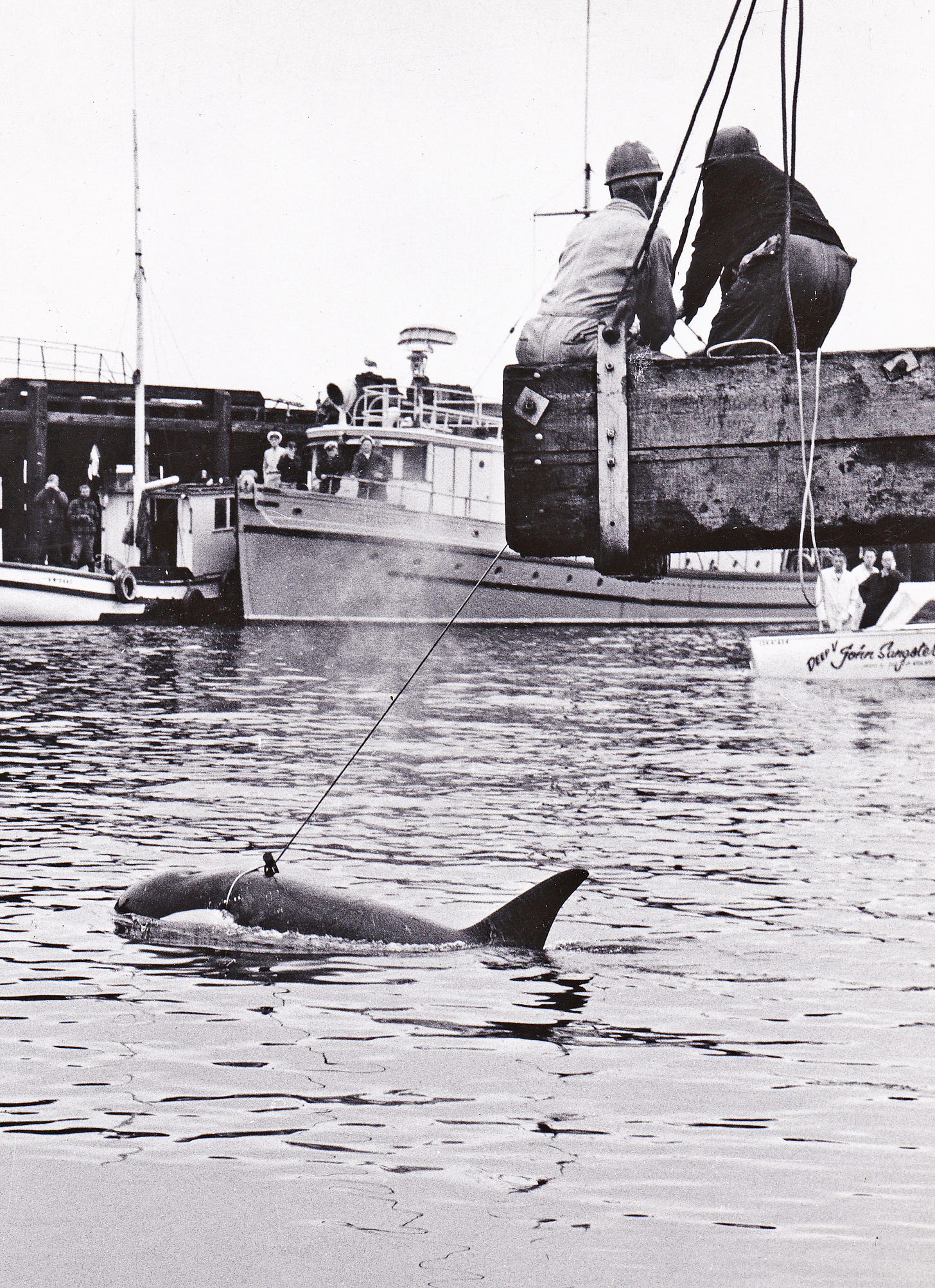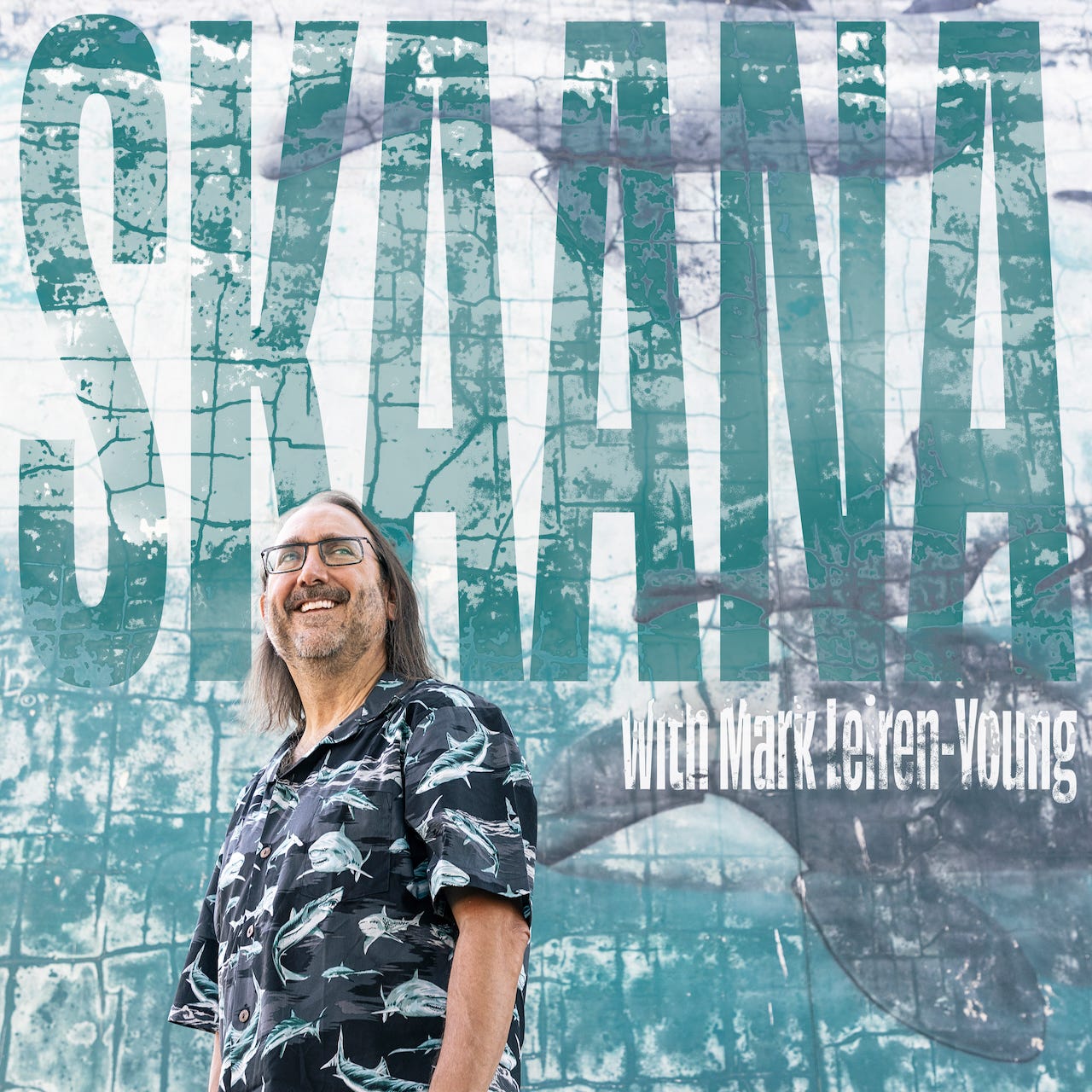The Anniversary of the Capture of The Killer Whale Who Changed the World
Remembering Moby Doll
Sixty years ago today… The young southern resident orca who became known as "Moby Doll" was accidentally captured by the Vancouver Aquarium when they were on a mission to harpoon and kill a killer whale as a model for an accurate life-sized sculpture. Yep, the harpooning happened. But it wasn’t fatal. Neither were all the gunshots. The rest is history… and my book, CBC radio documentary and… soon… feature documentary.
So I thought I’d share the introduction to The Killer Whale Who Changed the World below. Here’s the audio version… and sample of the audiobook… The rest is history… and my book, CBC radio documentary and… soon… feature documentary.
So I thought I’d share the introduction to The Killer Whale Who Changed the World below. Here’s the audio version… and sample of the audiobook…
The audiobook (narrated by me) is available on Audible, Spotify and pretty much everywhere else that sells or loans audiobooks…
On Audible and Spotify…
Moby Doll - harpoon still attached - at Burrard Dry Dock. July 17, 1964.
LOOMINGS
“The Killer is never hunted. I never heard what sort
of oil he has. Exception might be taken to the name bestowed upon this whale, on the ground of its indis- tinctness. For we are all killers, on land and on sea; Bonapartes and Sharks included.” Herman Melville, Moby-Dick; or, The Whale
July 16, 1964
THIRTEEN KILLER WHALES break through the pristine water off Saturna Island to take a breath under the morning sun. Their jet- black dorsal fins slice through the surf off Canada’s west coast and Joe Bauer can’t believe what he’s seeing.
Two months. The fisherman has waited two months for this moment, and now, just as he’s packing up camp, the day after the mission has been abandoned, a pod has appeared—and the whales are swimming toward the shoreline. “Whales!” shouts Bauer.
When Samuel Burich hears his friend, he can’t believe it either and doesn’t even glance up as he yells, “Bullshit!” Then he looks out at the ocean.
Burich has been commissioned to craft an anatomically accurate, life-sized facsimile of the ocean’s apex predator for the Vancouver Aquarium. The sculpture of the creature known as the fiercest, most unpredictable killer on the planet will be the aquarium’s centerpiece. Now, after eight weeks of waiting, watching, and dreaming, a killer whale is in sight. There’s only one thing Burich needs to do with the whale that will serve as the inspiration for his art.
Kill it.
Burich takes his place behind an antique muzzle-loaded Norwe- gian harpoon gun and lines up his target. The bigger whales seem to sense trouble and swim back out to sea. But the smallest one looks Burich right in the eye.
Burich stares back at his prey and gauges the distance. It’s no more than ninety feet away. His gun’s range is a hundred. He braces for the recoil from the gunpowder charge and fires. A four-foot-long, two-inch-thick steel bolt flies over the ocean—a six- hundred-foot line of rope holding three bright orange buoys known as “Scotchmen” trails in the sky like a kite tail and. . . nothing.
The small whale leaps and vanishes under the ocean, as if taunt- ing the would-be whaler. Burich is devastated. The mission is over. He’ll never be able to retrieve the harpoon line in time to prepare a second shot before the pod swims away.
Bauer, who is taking photos from the bluff below, has a better view through his camera lens. Burich has harpooned a whale.
The spear pierced the skin just behind the skull and hooked the killer like a giant baitfish the men could use to catch a bigger whale. And if they had another harpoon ready, Burich might take aim at one of the larger killers diving toward their catch.
Their ears still ringing from the blast, Burich and Bauer race toward their boat. Burich has a rifle to finish the job—and for self- defense, in case the other bloodthirsty creatures want vengeance. Everyone knows these are the planet’s most dangerous beasts, the only animal besides man that seems to kill for sport, a whale that will rip other whales to shreds.
As Burich and Bauer chase their victim, two larger whales burst through the water. The vicious killers are doing something unthinkable. They are carefully holding the smaller whale aloft. It’s unconscious, possibly dead. This isn’t an attack; it’s a rescue.
What kind of monsters are these?
For more on Moby Doll and The Killer Whale Who Changed the World please visit the Skaana podcast.






